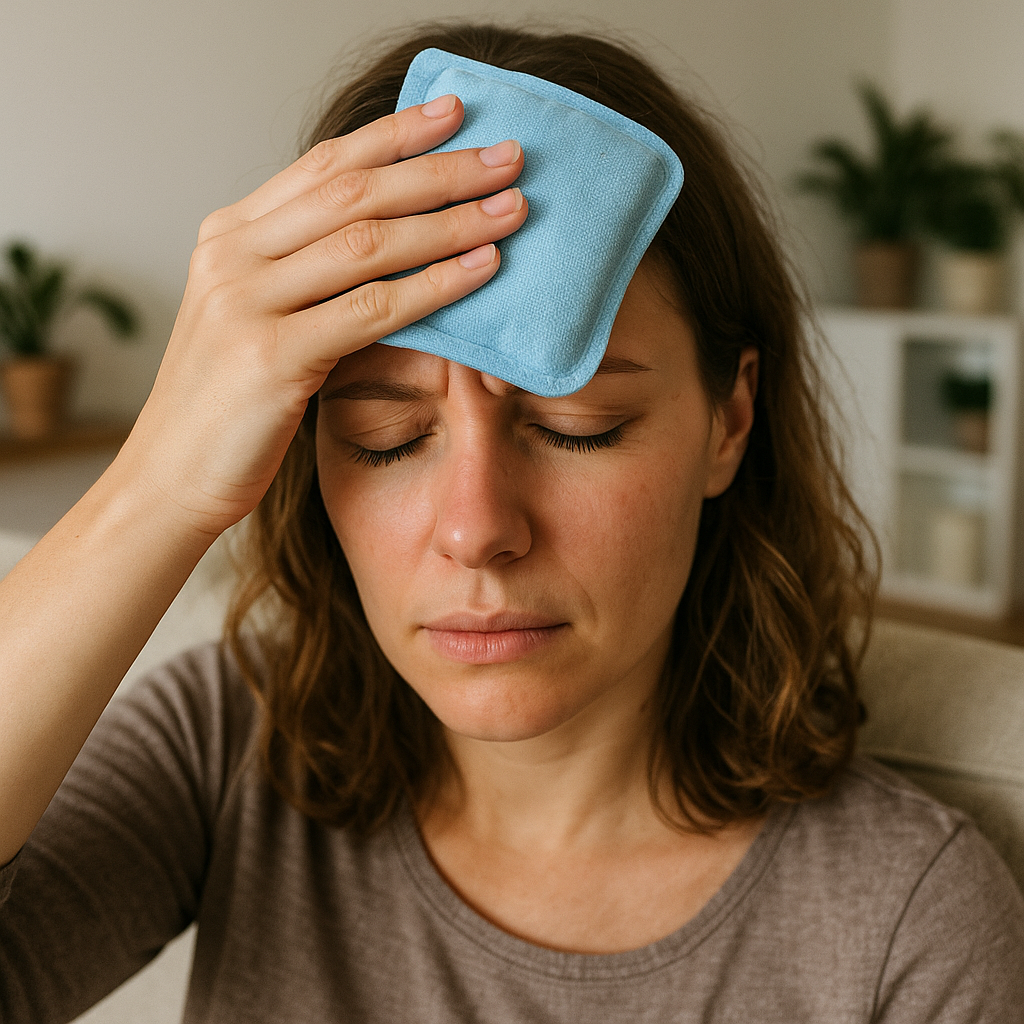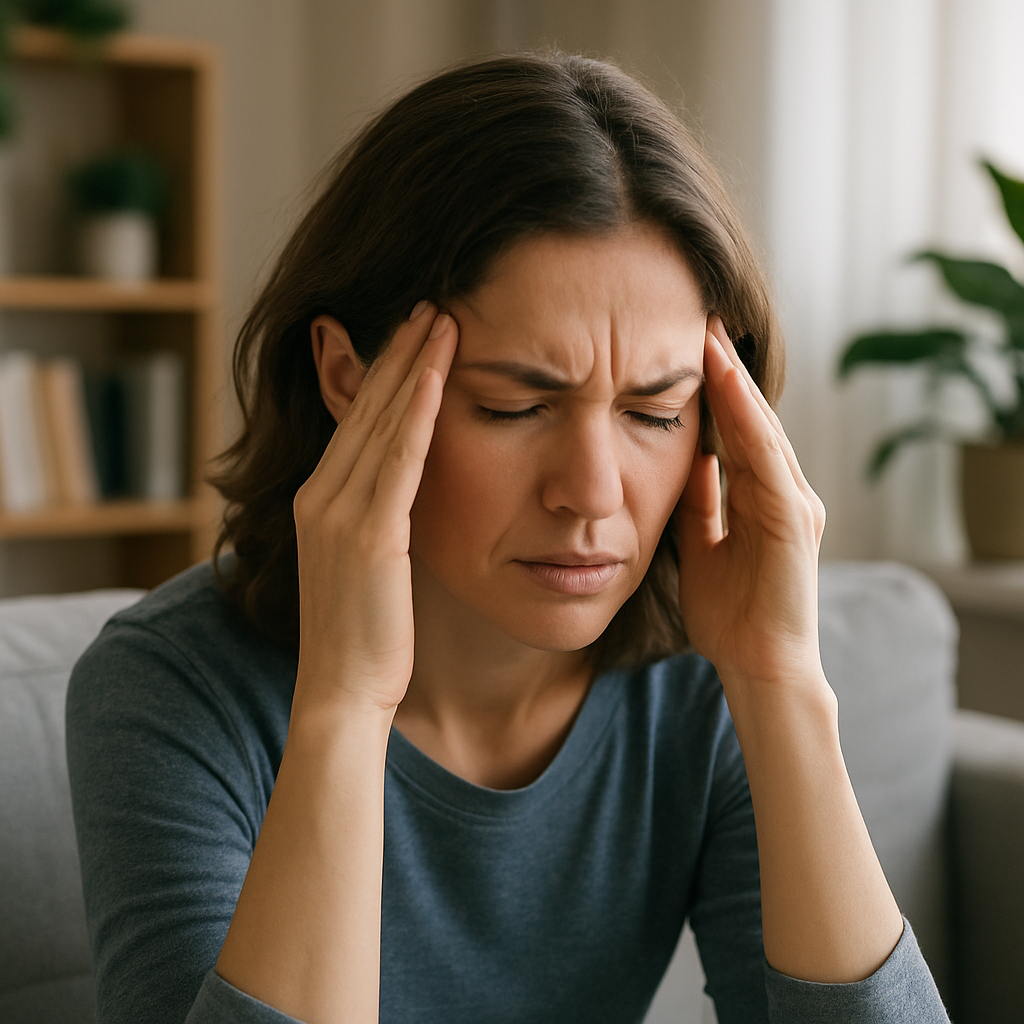Ask Ayurvedic doctor a question and get a consultation online on the problem of your concern in a free or paid mode. More than 2,000 experienced doctors work and wait for your questions on our site and help users to solve their health problems every day.
Shop Now in Our Store
How to Control Headache: Natural and Effective Ways

Headaches are an annoying and sometimes debilitating part of life that almost everyone faces at some point. Whether it’s a mild tension headache or a pounding migraine, learning how to control headache pain effectively can make a huge difference in your daily comfort. Many people want to know how to control headache at home, especially without relying on medications, which might cause side effects or simply aren’t always available. If you’ve ever wondered how to control headache immediately or searched for ways to ease that nagging pain naturally, you’re not alone.
This article will explore practical, easy-to-follow strategies for headache control that you can try right now. From breathing techniques and Ayurvedic oils to lifestyle changes and acupressure, there are numerous options to manage headaches without medicine. Let’s dive in and help you find relief the natural way.
Headache: Causes and Common Triggers
Before learning headache how to control, it's important to understand what causes headaches in the first place. Headaches can arise from a variety of factors, including stress, dehydration, poor posture, eye strain, and even certain foods or drinks. Environmental triggers like loud noises, bright lights, or strong smells may also play a role.
Sometimes headaches come from physical issues, like tension in the neck and shoulders or sinus problems. Other times, they’re related to lifestyle habits—skipping meals, not getting enough sleep, or overusing caffeine. Knowing your own triggers can help with effective headache control tips.

How to Control Headache Without Medicine
If you're looking for ways to ease your headache without popping a pill, there are several natural methods you can try. These techniques focus on relaxation and holistic approaches that have been used for centuries.
Breathing Exercises and Relaxation
One of the quickest ways to reduce headache pain is by calming your nervous system with deep breathing. Stress and anxiety often worsen headaches, so focusing on your breath can provide immediate relief. Try this simple exercise:
-
Sit or lie down comfortably.
-
Close your eyes and inhale slowly through your nose for a count of four.
-
Hold your breath for seven seconds.
-
Exhale slowly through your mouth for eight seconds.
-
Repeat this cycle 4-5 times.
This method helps reduce tension and oxygenates your brain, which can help control headache pain naturally.
Ayurvedic Remedies and Oils
Traditional Ayurvedic medicine offers various remedies that may be helpful for headache control. Essential oils like peppermint, lavender, and eucalyptus are well known for their soothing effects. Applying diluted peppermint oil to your temples or inhaling lavender oil can calm your mind and ease pain. You can also try a warm oil massage on your scalp using sesame or coconut oil to relax muscles and improve blood flow.
These natural remedies provide a gentle, side-effect-free way to manage headaches, especially when you want to avoid medicine.

Fast Headache Relief at Home
Sometimes, you need fast results. Here are some practical ways to get quick headache relief right at home.
Head Massage and Acupressure
Massaging your temples, neck, and shoulders can help reduce tension headaches. Use your fingertips to apply gentle, circular pressure for a few minutes. This increases blood flow and releases muscle knots.
Acupressure, a technique from traditional Chinese medicine, involves pressing specific points on the body. One common point for headache relief is between the thumb and index finger. Applying firm pressure here for a couple of minutes may provide surprisingly quick relief.
Applying Heat or Cold
Depending on the type of headache, applying a warm compress or a cold pack can be effective. For tension headaches, a warm towel or heating pad on the neck or forehead relaxes tight muscles. For migraines or throbbing pain, a cold pack wrapped in a cloth applied to the forehead can numb pain and reduce inflammation.

Lifestyle Headache Control Tips
Controlling headaches in the long run means paying attention to your everyday habits. Simple lifestyle changes often have the biggest impact, even though they’re easy to overlook.
Hydration, Sleep, and Routine
One of the most common but underestimated causes of headaches is dehydration. Drinking enough water throughout the day helps prevent headaches and supports overall health. Aim for at least 8 glasses daily, more if you’re active or it’s hot outside.
Sleep also plays a crucial role. Both too little and too much sleep can trigger headaches. Try to maintain a consistent sleep schedule—even on weekends. Quality sleep helps your brain recover and reduces the chance of headache flare-ups.
Establishing a daily routine that balances work, rest, and physical activity can also reduce stress—the silent headache trigger. When your body and mind are balanced, headaches tend to occur less frequently.
Foods That May Help or Trigger Headaches
What you eat (and don’t eat) can influence headache frequency and severity. Some foods are known to trigger headaches in sensitive individuals—these include processed meats, aged cheeses, chocolate, caffeine, and alcohol. If you notice headaches often follow certain foods, consider reducing or avoiding them.
On the flip side, some foods may actually help with headache control. Magnesium-rich foods like nuts, spinach, and whole grains can help relax blood vessels and muscles. Ginger is another natural anti-inflammatory that may ease headache pain. Incorporating these foods into your diet might not cure headaches overnight, but they support a headache-free lifestyle.

Headache Control Mudra: Simple Daily Practice
If you’re interested in holistic and spiritual approaches, you might find headache control mudra helpful. Mudras are hand gestures used in yoga and meditation that are believed to influence energy flow in the body.
The Apana Mudra, often called the “headache control mudra,” involves touching the tips of the middle and ring fingers to the tip of the thumb while keeping the other fingers straight. Practicing this mudra for 10-15 minutes daily during meditation or deep breathing is said to help detoxify the body and reduce headache symptoms.
While the scientific evidence is limited, many people find mudras calming and beneficial as part of their headache management routine. It’s a gentle, drug-free way to stay connected to your body’s energy and may complement other headache control strategies.
Conclusion
Learning how to control headache pain naturally and effectively is a game-changer for anyone tired of relying solely on medication. From breathing exercises and Ayurvedic oils to simple home remedies like massage and applying heat or cold, there’s plenty you can do on your own to ease discomfort. Plus, making lifestyle changes—like staying hydrated, eating the right foods, and practicing the headache control mudra—helps reduce how often headaches even happen.
Remember, the key is listening to your body and finding what works best for you. Headaches can be tricky because they have many causes and triggers, so combining several strategies often gives the best results. Next time you feel a headache coming on, try some of these tips and see how your body responds. With consistent care, you can regain control and enjoy more headache-free days.
If you found these tips helpful, please share this article with friends and family who might also benefit from natural headache relief. Your health and well-being matter, and sometimes the best solutions are the simplest.
FAQs
How do you stop a headache fast?
For immediate relief, try deep breathing exercises, a quick head massage, or applying a cold pack to your forehead. These can help reduce tension and numb the pain quickly.
What are the top 3 causes of headaches?
The most common causes include stress and tension, dehydration, and poor sleep habits. Identifying your triggers can help you manage headaches better.
What drink is good for headaches?
Water is the best choice to prevent dehydration-related headaches. Herbal teas like ginger or peppermint tea may also soothe headache pain naturally.
Where to massage for a headache?
Massage your temples, the base of the skull, and the space between your thumb and index finger. These areas help release tension and stimulate blood flow to relieve pain.
What fruit stops headaches?
Bananas are often recommended because they’re rich in magnesium, which can help relax muscles and reduce headache frequency. Other fruits high in water content, like watermelon, also support hydration.
This article is checked by the current qualified Dr Sujal Patil and can be considered a reliable source of information for users of the site.

